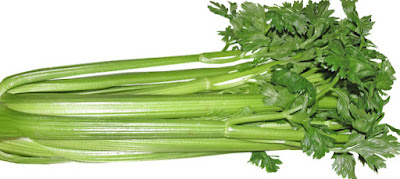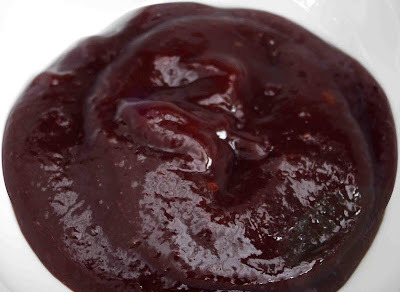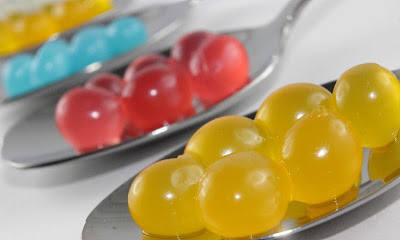A New Zealand scientific study conducted by White et al. in 2013 involving 281 healthy young adults found that eating seven to eight fruits and vegetables per day could lead to improvements in mood within 24 hours.
Another Oyebode (2014) research involving 65,000 adults found that those eating seven fruits and vegetables a day had a decreased risk of death from diseases over those who ate just five servings.
This is one of the best vegetable broth recipes I have tried.
INGREDIENTS:
2 medium zucchini
Handful green beans or spinach (or both)
2 stalks celery
1 cup chopped parsley
PREPARATION PROCEDURE:
1) Wash the vegetables thoroughly under running water.
2) Slice the vegetable s into proper and uniform sizes.
3) Steam the zucchini, beans, and celery until soft, about 20 minutes. Place vegetables, steaming water, and parsley into a blender and blend for 1 to 2 minutes until smooth.
4) You can add seasonings or hot water depending on liquid percentage you prefer.
RELATED COOKING POSTS:
Steam Cooking Times: How Long to Steam Vegetables, Fish, Chicken, Lobster and Other Savory Foods
How to Prevent Discoloration in Vegetables When Cooking
8 Best Healthy Foods to Eat Everyday to Lose Weight and for Perfect Skin
Spinach and celery is on the Environmental Working Group’s “Dirty Dozen” list of produce containing the most pesticides.
The Environmental Working Group recommends buying organic, as conventional spinach from supermarkets contain more pesticide residue than almost any other fruits or vegetables, and washing will not remove all of it.
According to Leigh Erin Connealy, M.D:
“Because of pesticides and the diminished mineral levels in soils used today, eating non- organic produce will not provide you with the antioxidants (or vitamins and minerals) that your body needs. On average, organic produce contains nearly 30 percent more nutrients than non- organic and is grown without using harsh chemicals that can lead to further free radical exposure.”
GREEN BEANS
Green bean is a perfect food to add to your diet because they are high in nutrients and low in calories: one cup of cooked green beans contains only 44 calories. A great for healthy weight loss diet food.
Green beans contain carotenoid phytonutrients such as beta carotene, lutein and zeaxanthin, which provide anti-inflammatory properties.
They are a concentrated source of vitamin K, which is necessary for bone mineralization, and also of vitamins A and C, which give powerful antioxidant protection and reduce the number of free radicals in the body.
Related Post: How to Store Green Beans? - Best Way to Store Vegetables in Fridge
Green beans are also an excellent source of lecithin.
Effects of Lecithin from Green Beans: Reportedly improves memory in healthy people.
One reliable research found that Massachusetts Institute of Technology (MIT) students showed a greater ability to recall a list of words after taking 3 grams a day; in fact, an improved memory can usually result after only a few days of taking lecithin.
Lecithin also has been shown to be effective treatments for bipolar disorder in those individuals who have shown little or no improvement with standard drugs such as lithium.
Related Green Beans Recipes:
1) How to Make TGI Fridays Crispy Green Bean French Fries?
2) How to Make Healthy and Fresh Green Bean Casserole?
SPINACH
A scientific study reported that a diet supplemented with spinach can “reverse age induced declines in beta- adrenergic receptor function in cerebellar Purkinje neurons” as well as improve learning on motor tasks and memory in aging rats. You are in luck if you are a rat.
The carotenoids lutein and zeaxanthin, found in fresh organic spinach, may help prevent macular degeneration, one of the chief causes of blindness in old people.
Other carotenoids could lower the chance of heart attack in men with high blood pressure by 60 to 70 percent.
CELERY
Good Health Effects of Celery: Celery contains the flavonoid luteolin, which has been found to lessen the levels of beta- amyloid, the sticky deposits associated with Alzheimer’s disease, in mice, and to inhibit age- related inflammation of the brain and associated memory problems in mice. You are lucky if you are mice.
PARSLEY
Parsley is a good source of carotenoids. Parsley is also rich in several essential vitamins that play roles in bone, immune health and nervous system. This herb also contains flavonoids including apigenin, chrysoeriol and luteolin—which are considered to have anti-inflammatory effects. If you haven’t already, think making parsley a kitchen staple.
ZUCCHINI
Even though it is 95 percent water and 4 percent carbohydrate, zucchini is a low-calorie source of antioxidants and anti-inflammatory, as well as some of the phytonutrients that help protect your eye or vision.
Zucchini supply vitamins A and C, potassium, folate, beta-carotene, lutein, and manganese.
The manganese in fresh organic zucchini (one cup provides 38 percent of the recommended daily value of this mineral) is a significant cofactor in a number of enzymes, including some that help cells maintain their shape and others that are essential to metabolic processes.
Manganese ions are vital to the process of neutralizing superoxide free radicals, which are quite toxic.
REFERENCES:
Deborah Klein. 2010. The 200 SuperFoods that will save your life: a complete program to live younger, longer. McGraw-Hill Education. ISBN-10: 9780071625753 Get this book now, https://amzn.to/2XBoup9
George Mateljan. 2007. The World's Healthiest Foods, Essential Guide for the Healthiest Way of Eating. GMF Publishing. ISBN-10: 0976918544 Get it, https://amzn.to/2X7OPf3
Peter Bennett, Stephen Barrie, Sara Faye. 2011. 7-Day Detox Miracle: Revitalize Your Mind and Body with This Safe and Effective Life-Enhancing Program, 2nd Revised Edition. Harmony. ASIN: B004QWZHEC Download it here, https://amzn.to/2J5z0M6
TIME Special - 2016-7-27 SIP, Siobhan O'Connor (Editor), Alexandra Sifferlin (Writer). 100 healthiest foods and how to eat them. Time Books. ISBN-13: 978-1683306375 Get more information here, https://amzn.to/2XwzofL









